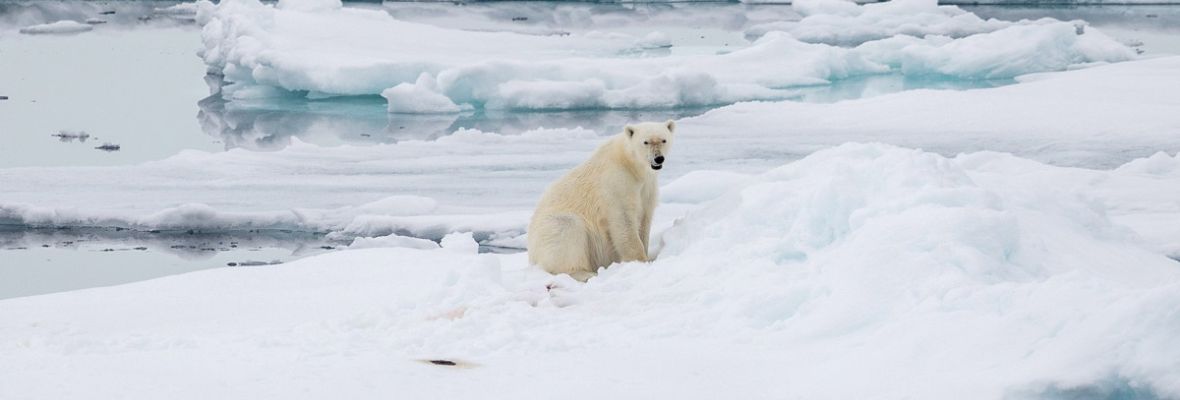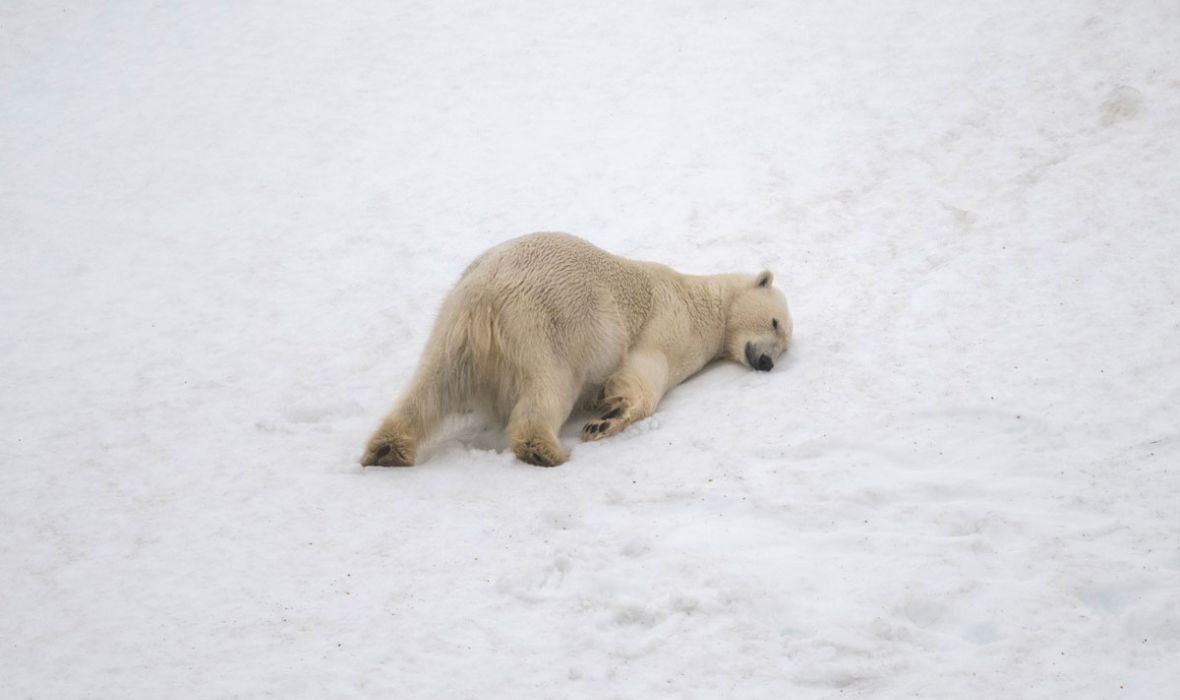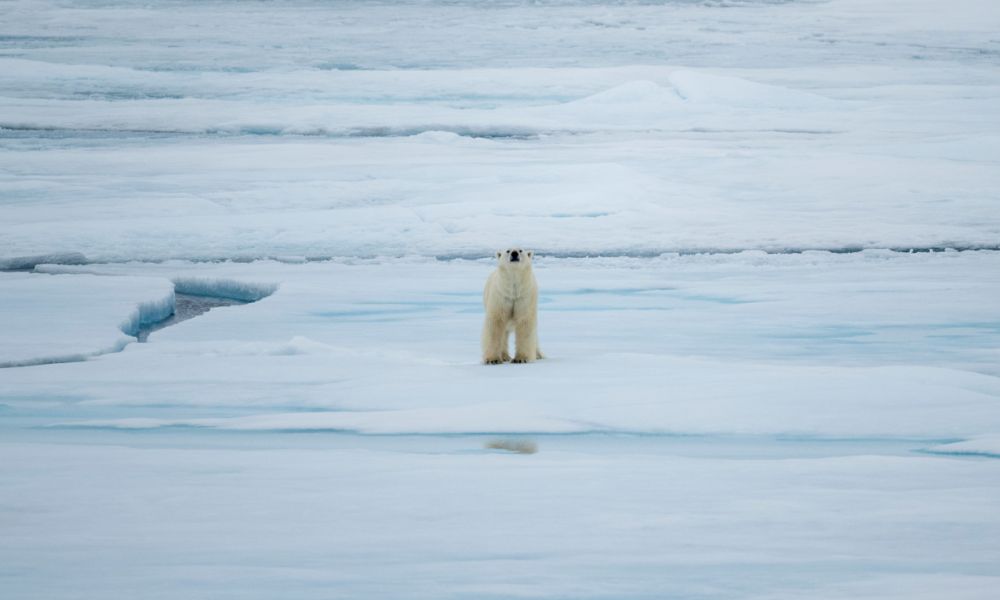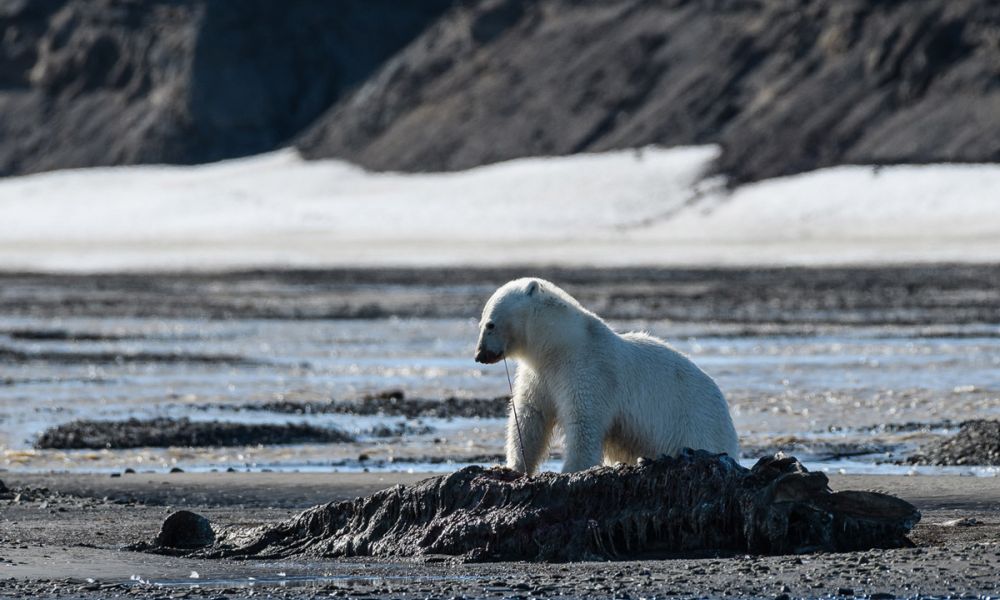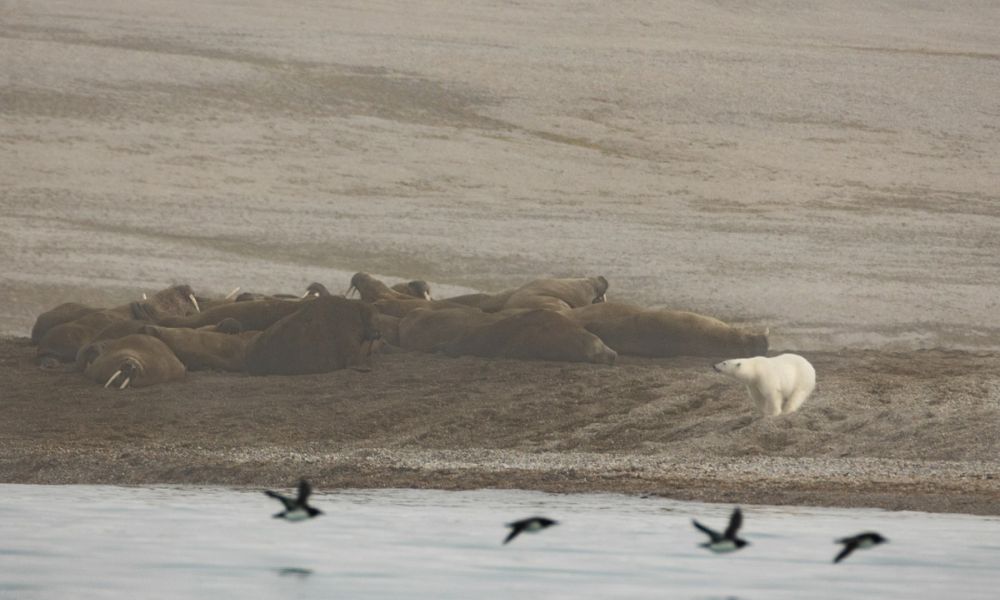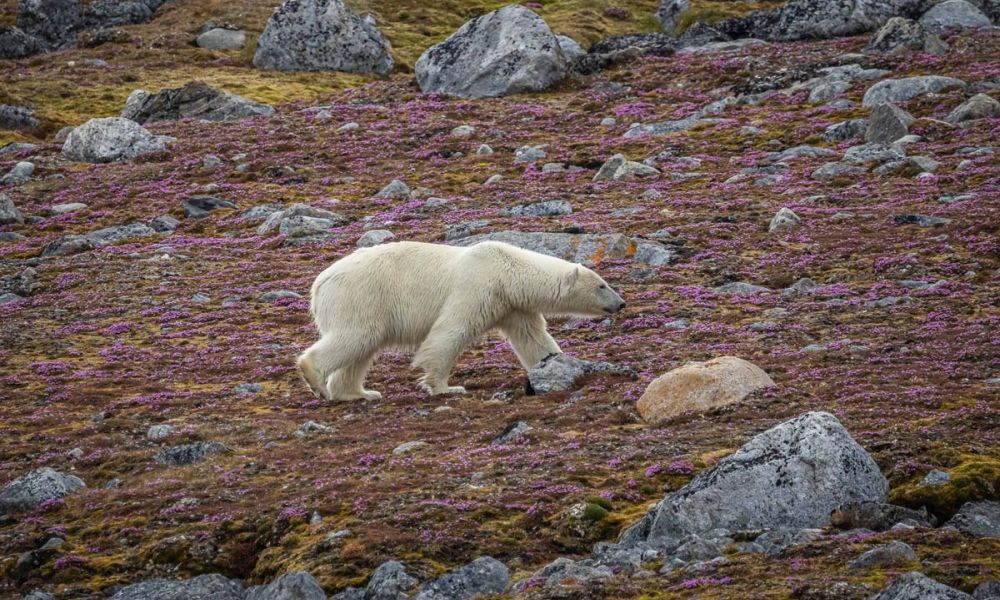How Big Is a Polar Bear?
Meet the king of the Arctic! These popular bears are among the main reasons why our guests join our Arctic expeditions. Males weigh around 300–700 kg (661.4–1543.2 lbs), while females weigh 150–350 kg (330.7–771.6 lbs). Their enormous size makes them the largest bear species in the world, and when next to humans, they are roughly as tall as 10 adult men!
How does its size compare to other well-known bear species and Arctic wildlife?
- Grizzly Bear (North American brown bear) vs Polar Bear: 180–360 kg vs 300–700 kg
- Walrus vs Polar Bear: 800–1700 kg vs 300–700 kg
- Kodiak Bear vs Polar Bear: 318–680 kg vs 300–700 kg
What Do They Eat?
The polar bear's main diet consists of seals, especially the ringed seal, which are typically caught in breathing holes or ice caves where the parent hides its young. The bears ambush the seals as they surface to breathe or rest on the ice. They can detect the seal’s scent through several metres of snow. However, summer can be challenging, as they find it difficult to catch seals without ice and must rely on birds and carcasses from cliffs. As a result, they also eat swimming birds, isolated beluga whales, kelp, and berries.
On the other hand, although adult polar bears have no natural predators, their cubs may be attacked by other polar bears and Arctic wolves. They also face threats from climate change and human intrusions.
How Did Polar Bears Evolve To Live in the Arctic Environment Over Time?
This white, snow-like bear species actually evolved from a primarily brownish bear species found mostly in North America - the grizzly bear.These bears spread across the continent until encountering the sea and ice, where they found seals, prompting new fishing techniques. They adapted to the cold Arctic environment, developing stronger claws, sharper teeth for seal hunting, and lighter fur. This transformation enabled them to become specialised predators in the seal-rich waters of the North Pole. During this time, the environment and species influenced each other, creating a new ecological niche.
Where Is Their Habitat?
The polar bear's natural habitat includes the major seas of the Arctic around the North Pole, the pack ice. It extends further south to Scoresby Sund and Upernavik in Greenland, Svalbard, Franz Josef Land, and the Arctic regions of Russia, Alaska, and Canada. They can also be found further south, floating on icebergs or wandering across the tundra. A common mistake is to think that they can be found in Antarctica. However, that is a big mistake as the continents are far too distant.
What Adaptations Help Polar Bears Survive in the Arctic?
Polar bears fur is thick and water-repellent, and despite their white coat that provides camouflage from prey on the snow, their skin is black, which helps absorb heat from the sun. They also have a big layer of fat to maintain body warmth, alongside with powerful paws adapted for swimming and anti-slip soles for navigating icy terrain.
When Is Their Mating Season?
Mating season occurs from mid-April, but although fertilisation has taken place, foetal development begins only when the female hibernates in late summer. This period spans from October to April, preventing the female from hunting during the prime hunting season. The cubs are born in December or January, measuring no larger than rats at birth and nearly without fur. The mother's milk is very high in fat; after two months, the cubs weigh 5 kg. By mid-March to April, the cubs have grown fur and now weigh approximately 10 kg, signalling that it's time to leave the den.



